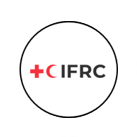In order to efficiently match the needs of the community with specific relief projects, it is crucial to have one main informative platform such as a dashboard, especially when managing large operations and multiple programs. The Zimbabwe Red Cross Society (ZRCS), was in need of such a platform that allows them to visualize data and to report on progress in a resourceful way. Tapiwa Chadoka, Operations Manager at the Zimbabwe Red Cross Society, said “there was a desire to digitalize many of our processes but most importantly the Monitoring, Evaluation, Accountability, Learning and reporting processes”. 510, the data and digital initiative of the Netherlands Red Cross, was able to support ZRCS in developing a template for a dashboard that fits the need of the national society.
Dashboard design
The idea behind the dashboard is the ability to visualize and analyze all the data gathered on the COVID-19 response in one location. Chadoka elaborates; “we had data on the support we were giving as a national society, including the number of people reached, and reporting this became very important to us. In bringing all this data together, we can ensure proper reporting”. He continues on why reporting was a key focus to the national society, “ZRCS conducts many interventions, specifically those that fall under risk communication and community engagement, and it is easy to duplicate data and reporting if there isn’t a structured way of analyzing, visualizing, and reporting this information”. The design and layout of the dashboard was developed with Marijke Panis, 510’s Hazard and Impact Analyst. “While working closely with the national society, we were able to set up a template that included interventions and programs ZRCS was undergoing in response to COVID-19”, she explains. The dashboard includes a geolocation function. “With the inclusion of geolocation, we are able to do multiple things; 1) easily pinpoint our intervention locations, 2) map our resources identifying any potential gaps, and 3) we are able to detect the capacity of the national society”, according to Chadoka.

Zimbabwe’s Red Cross Society’s Covid Dashboard
Sustainability and continuity
The advantage of designing a template is twofold First, the Zimbabwe Red Cross Society has full ownership on the layout and wit’s featured components, and second the national society maintains flexibility on which data they would like represented. Having flexibility with such a digital tool is essential for national societies, as it allows them to adapt the tool and ensure that it is representative of their programs even when the COVID-19 pandemic is over. Chadoka explains how “in almost every part of the country, something is likely to happen, whether a natural or health emergency. With the help of 510, we have developed a foundation that we can build on to include more dimensions that would be useful to our other programs and priorities”. The needs of the Zimbabwean communities change with the circumstances of the country and having a digital tool that can be used to represent accurate data of any humanitarian crisis is fundamental for accurate relief assistance/progams. Anticipating the sustainability and continuity of the project, Chadoka says that “ZRCS wants to involve more staff members in this project to expand their awareness and capacity in using such digital tools. Our data team had the opportunity to build on their skills, while working with Marijke, and are now more confident in undertaking this engagement and digitalizing our resources”. He concluded “building the digital capacity of ZRCS’ staff has been our first steps towards digitizing our practices”. The Zimbabwe Red Cross Society expressed interest in partaking in the Digital Transformation as a national society and has been working on addressing potential limitations that might be faced along the way. “Building the digital capacity of ZRCS’ staff has been our first steps towards the drive in digitizing our practices”, Chadoka concludes.


Staff member getting vaccinated COVID-19 Training of ZRCS clinic staff
Image source: IFRC ShaRED Web Platform

